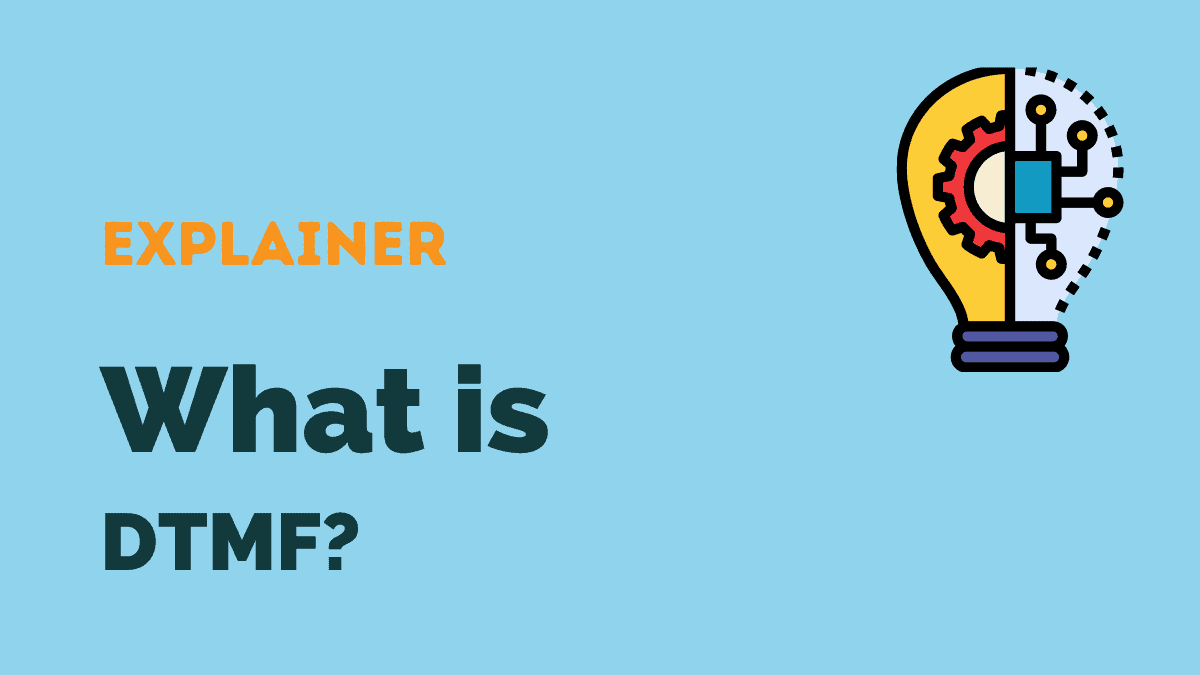In this post:
- What is DTMF?
- How do contact centers use DTMF?
- DTMF replacement technologies
- DTMF will likely stick around
What is DTMF?
Dual Tone Multi-Frequency (DTMF) is a technology that allows telephone callers to communicate with automated programs by pressing number keys.
Here’s how it works:
Pushing a phone key produces a high and a low tone. Each tone is different, allowing systems to identify which button was pushed and take actions based on this selection.
The key to the system’s effectiveness is that the sound consists of two separate tones. This means there’s no chance it will mistake human voices for a button push.
In the 1960’s, these systems replaced rotary dials as the primary way of making phone calls.
But the tech is also well-known for its use in common contact center technologies. And some contact centers still use these systems today.
(Want more articles like this in your inbox? Click here to get our fortnightly CX newsletter.)
How do contact centers use DTMF?
DTMF systems are widely used in contact center IVR systems. These tools automatically answer the call then provide the caller with options they can select by pressing a particular key.
The IVR system listens to the tone produced by the key press and then performs the corresponding action. This allows businesses to gather intent and route the caller to the correct agent based on their choices.
Most people reading this article will have had experience with these tools. Any time an automated system answered your call and asked you to dial a number to select an option, it was probably a DTMF system.
DTMF had other uses, too. It was a common and secure way of allowing businesses to take credit card payments.
Instead of telling the agent their number, the caller would dial it into their phone so the payment system could process the transaction.
DTMF IVRs were an imperfect solution
While useful for businesses, DTMF IVRs were not loved by customers.
It was quite a clumsy solution. This meant people often viewed them as a tool that blocked agent access rather than as a way to increase their chances of getting relevant help.
Customers found it especially frustrating when the reason for their call wasn’t listed or when they were forced to listen to irrelevant options.
DTMF replacement technologies already exist
DTMF has been around for a long time. And while some contact centers still use these systems, it’s a legacy technology that is on its way out.
The main replacement technology is IVRs powered by conversational AI.
These tools work by processing language and deciphering its meaning. They then take action based on this input.
This is a much more streamlined way to handle calls than DTMF.
Imagine a business using an IVR to discover caller intent. A DTMF IVR would ask the caller why they are calling and then provide a list of potential options they could choose from.
But a conversational IVR system would simply ask the caller to state their reason for calling and then gather meaning from the answer in real-time.
It’s a similar technology and experience to using a tool like Alexa, Google Assistant, or Siri.
For callers, it’s a much more intuitive way of navigating an IVR – the experience is more like talking to a person than a machine. It’s also less time-consuming as it allows them to progress through multiple steps at once.
DTMF will likely stick around for a while
Despite these alternative options, DTMF will likely stick around. These services still work for smaller contact centers without complex routing needs.
But if you’re interested in making the switch, check out our article on conversational IVR now.




